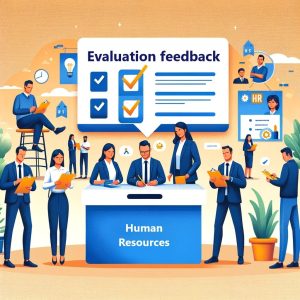In any organization, the human resources (HR) and recruitment teams play a pivotal role in shaping the workforce and, by extension, influencing the company’s culture and success. Evaluating the effectiveness of these teams is crucial to ensure they are not just meeting but exceeding their objectives. This article delves into the various metrics and methods for assessing the performance of HR and recruitment teams, ensuring they align with the broader organizational goals.
Understanding the role of HR and recruitment teams
Before diving into evaluation methods, it’s essential to understand the diverse roles played by HR and recruitment teams. While recruitment teams focus primarily on attracting, screening, and hiring new talent, HR teams handle a wider range of responsibilities, including employee retention, training and development, benefits administration, performance management, and compliance with labour laws.
Key performance indicators (KPIs) of recruitment teams
Evaluating recruitment teams involves assessing both the efficiency and effectiveness of their hiring processes. Key metrics include:
- Time-to-fill: measures the time taken to fill a vacancy from when it’s advertised to when a candidate accepts the job offer.
- Quality of hire: assessed through new employee performance ratings, turnover rates of new hires, and hiring manager satisfaction.
- Cost-per-hire: the total costs associated with the recruitment process divided by the number of hires in a specific period.
- Applicant satisfaction: gauged through candidate feedback surveys to assess the recruitment process’s effectiveness from the candidate’s perspective.
Measuring HR team performance
Evaluating HR teams requires a broader set of metrics, given their wide-ranging functions. Important KPIs include:
- Employee turnover rate: a high turnover rate can indicate issues in employee satisfaction, workplace culture, or retention strategies.
- Employee satisfaction and engagement: typically measured through regular surveys, these metrics are vital indicators of the overall workplace environment.
- Training effectiveness: assessed by measuring the impact of training programs on employee performance and skill development.
- Compliance and risk management: ensuring the company adheres to labour laws and regulations, measured through audit outcomes or legal issues encountered.
The role of feedback in evaluation
Beyond quantitative metrics, qualitative feedback from employees, managers, and leadership is crucial. This feedback can provide insights into the effectiveness of HR policies, the quality of internal communication, and the overall perception of the HR and recruitment teams within the organization.
Continuous improvement
Evaluation should not be a one-time event but a continuous process. Regular reviews, coupled with a willingness to adapt and improve, are essential. This might involve updating recruitment strategies, investing in new HR technologies, or revising training programs to better meet employee needs.
Aligning with organizational goals
Ultimately, the effectiveness of HR and recruitment teams should be aligned with the organization’s overall objectives. This alignment ensures that the strategies and efforts of these teams contribute directly to the company’s growth and success.
Strategic evaluation in HR and recruitment: navigating the complex landscape for building a high-performance workforce
Evaluating the work of HR and recruitment teams is a multifaceted process that goes beyond mere number crunching. It involves a mix of quantitative and qualitative assessments, regular feedback, and a continuous improvement approach. By effectively evaluating and aligning their efforts with organizational goals, HR and recruitment teams can significantly contribute to building a strong, capable, and motivated workforce, driving the organization towards success.





